There’s something special about pulling biscuits from the oven. Their golden tops are crisp, while the inside is soft and fluffy. If you have gluten intolerance or just want allergy-friendly biscuits, finding the right recipe can be tough. But don’t worry! This easy recipe will give you light and fluffy biscuits and bring back the joy of homemade baking. Pair these biscuits with a comforting bowl of Gluten-Free Sausage Lentil Soup, or serve them alongside a Gluten-Free Pot Roast for a hearty dinner
We tested 11 gluten-free flour blends to find the best for homemade biscuits. You can use brands like Cup4Cup Gluten-Free Flour or try Sunset Divided Flour and Jules GF. Making gluten free biscuits is now easier than ever. With a few simple tips and the right ingredients, you can enjoy warm, buttery biscuits again. Get ready to dive into the world of gluten free baking!
Table of contents
- Introduction to Gluten Free Biscuits
- Why Choose Gluten Free Biscuits?
- Essential Ingredients for Homemade Biscuits
- Testing Different Gluten Free Flour Blends
- Tips for Achieving Light and Fluffy Biscuits
- The Best Method for Making Gluten Free Biscuits
- Serving Suggestions for Gluten Free Biscuits
- How to Store and Freeze Your Biscuits
- Common Mistakes to Avoid When Making Biscuits
- Conclusion
- FAQ
Introduction to Gluten Free Biscuits
Gluten free biscuits are becoming more popular. This is because more people are following a gluten free diet due to health reasons like celiac disease. These biscuits let those who can’t eat gluten still enjoy fresh, tasty baked goods.
When baking gluten free, it’s important to know how to replace gluten with other ingredients. You also need to use special techniques. This way, you can make gluten free biscuits that taste and feel like the real thing.
To make great gluten free biscuits, you need to understand how to use different flours and fats. You also have to adjust the ingredients that help the biscuits rise. With practice, you can make gluten free biscuits that are delicious and light.
Why Choose Gluten Free Biscuits?
Gluten free biscuits are great for people with gluten sensitivity or celiac disease. They offer a tasty option without the gluten. You can try new flavors and textures that regular biscuits can’t match.
Gluten free options are good for anyone wanting a healthier diet. Flours like chickpea and quinoa have more protein and fiber than wheat. Chickpea flour, for example, has 21g of protein and 14g of fiber per 100g. This helps with digestion and keeps you full.
Adding gluten free biscuits to your meals brings in important nutrients and flavor. You can mix different flours to make recipes that fit your taste and health needs. Gluten free baking is a fun way to get creative in the kitchen.
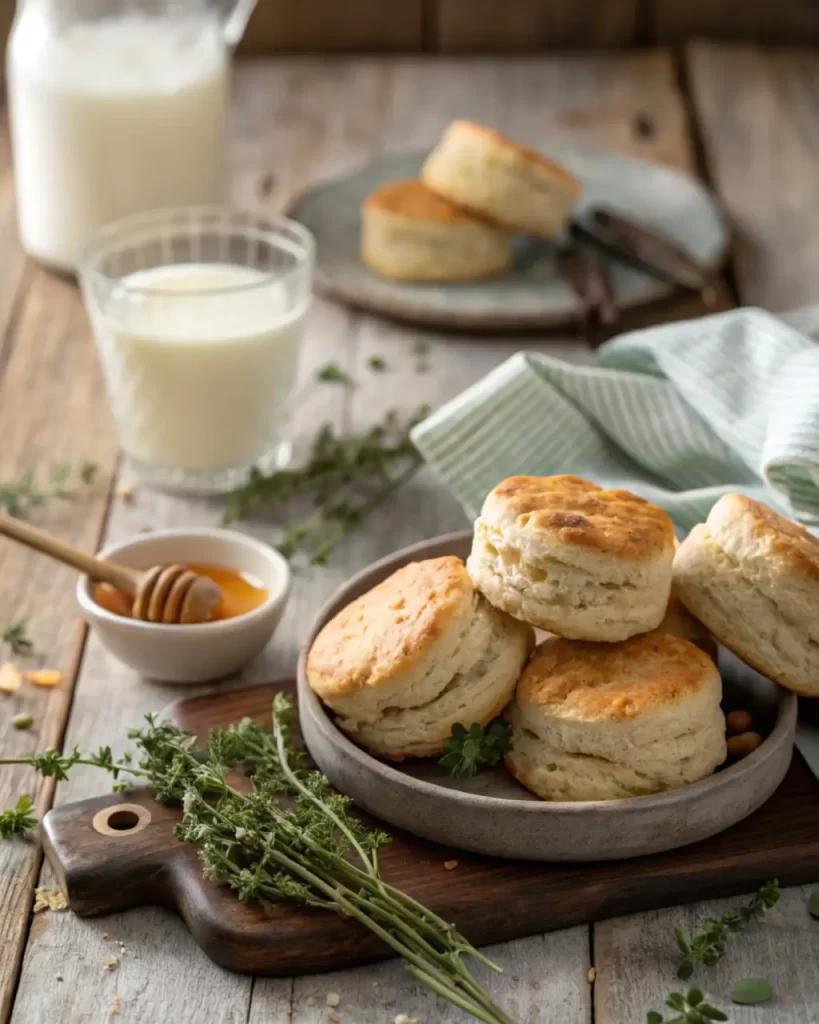
Essential Ingredients for Homemade Biscuits
Making gluten-free biscuits needs the right ingredients. Knowing what to use helps get the perfect texture and taste. Here’s a list of key ingredients for the best biscuits.
Choosing the Right Gluten-Free Flour Blend
The right flour blend is crucial for great biscuits. Brands like Cup4Cup, Bob’s Red Mill, and King Arthur Flour work well. They often have xanthan gum for better dough structure.
Stay away from blends like Just About Food Gluten Free Whole Grain Flour. It might not give the best results. Choosing the best flour is key for a great biscuit.
Importance of Baking Powder and Salt
Baking powder makes biscuits rise and become fluffy. Use aluminum-free baking powder to avoid a metallic taste. Salt enhances flavor and balances sweetness.
Getting the right amounts of these ingredients is important. It affects the biscuit’s texture and taste.
Role of Butter and Milk in Biscuit Texture
Butter makes biscuits flaky by creating layers. Use cold butter for the best results. Whole milk or alternatives add moisture for a tender biscuit.
Getting the fat and liquid balance right is crucial. You can use dairy-free yogurt and milk if needed. Preparing these ingredients well will improve your biscuit-making.
Testing Different Gluten Free Flour Blends
Baking with gluten free flour can be tricky. The right flour blend is key to making great biscuits. This section looks at different gluten free flour blends, including popular brands and homemade options.
Overview of Flour Blends Tested
Ten gluten free flour blends were tested for making light and fluffy biscuits. Brands like Bob’s Red Mill, King Arthur, and Pillsbury were included. Specialty blends like Jules GF Flour, Better Batter, and Authentic Foods were also tested.
Xanthan gum is a common binder in gluten free flour blends. It helps keep biscuits together. The testing included mixes like Cup4Cup, Bob’s Red Mill, and King Arthur. These blends were compared to classic biscuit recipes.
Recommended Flour Options for Best Results
Cup4Cup is the top choice for gluten free biscuit baking. It was developed by Lena Kwak for the French Laundry restaurant. It’s priced around $17 for 3 pounds on Amazon, making it a good investment for bakers.
Other blends like King Arthur and Gluten Free Bisquick are also good. They might need some adjustments to get the right texture. Finding the right flour blend is important for success, so it’s worth trying different options.
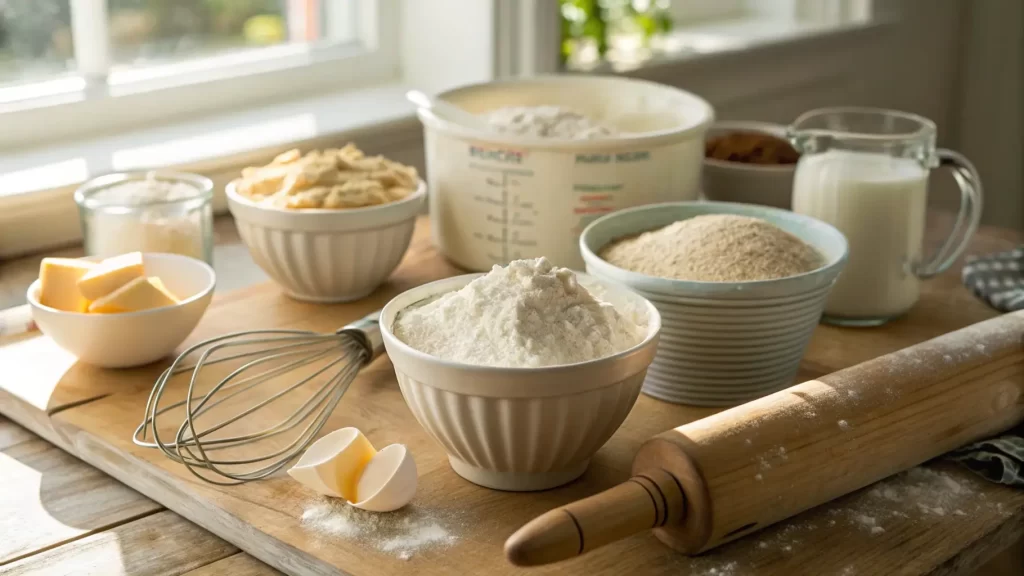
Tips for Achieving Light and Fluffy Biscuits
To make light and flaky biscuits, some techniques are key. Using cold ingredients and mastering biscuit-making are crucial. These steps help you succeed in making biscuits.
Understanding the Importance of Cold Ingredients
Using cold ingredients is essential for the right biscuit texture. Cold butter, milk, and others create steam when baked. This steam makes your biscuits flaky and delicious. Make sure to mix these cold ingredients fast to keep them cold.
How to Knead and Fold the Dough Correctly
Kneading and folding biscuit dough correctly is important. When kneading, be gentle to avoid toughness. Instead, use the folding method to add layers without overworking. This method helps your biscuits rise and become fluffy. Follow these tips to make perfect biscuits every time.
The Best Method for Making Gluten Free Biscuits
Making glutenless biscuits is a special process that makes them fluffy and tasty. Follow these steps to make great gluten-free dough.
Step-by-Step Process for Preparing the Dough
Start with the right ingredients for perfect biscuits. Here are the key steps for baking biscuits:
- Preheat your oven to 425°F.
- In a large bowl, mix 2 ¼ cups of gluten-free flour, 2 tablespoons of sugar, and ½ teaspoon of salt.
- Add 1 tablespoon of baking powder for a good mix with dry ingredients.
- Include 1 teaspoon of xanthan gum if your flour doesn’t have it.
- Cut in 26.67% cold butter (about ½ cup) until it’s coarse crumbs.
- Stir in ¾ cup of buttermilk to moisten the mix.
- Work the dough gently and avoid overmixing. Let it rest for 20 minutes.
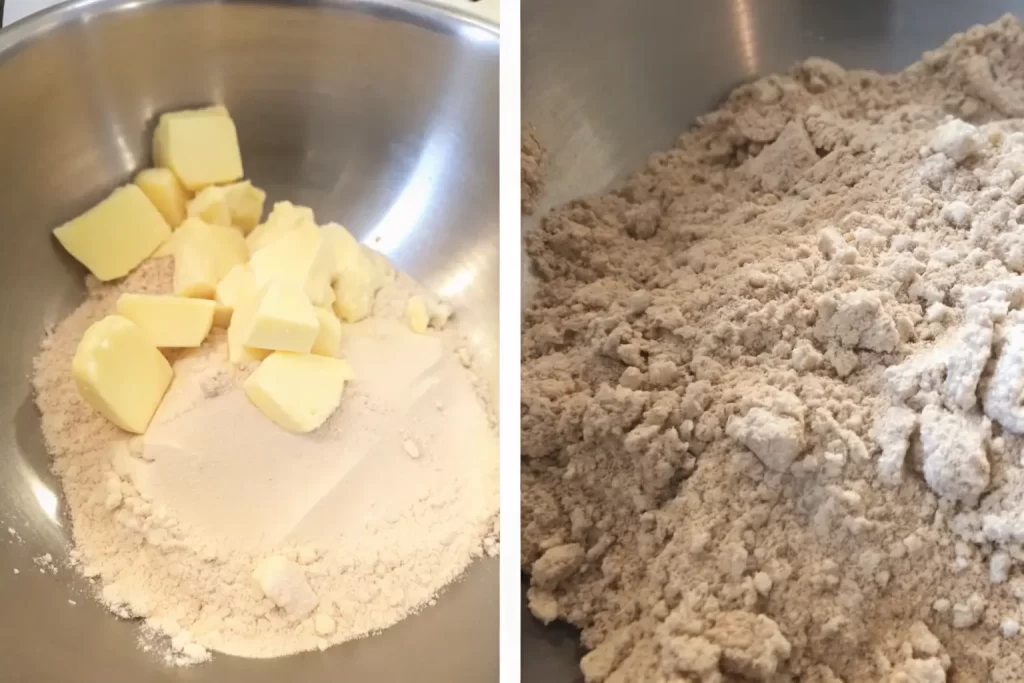
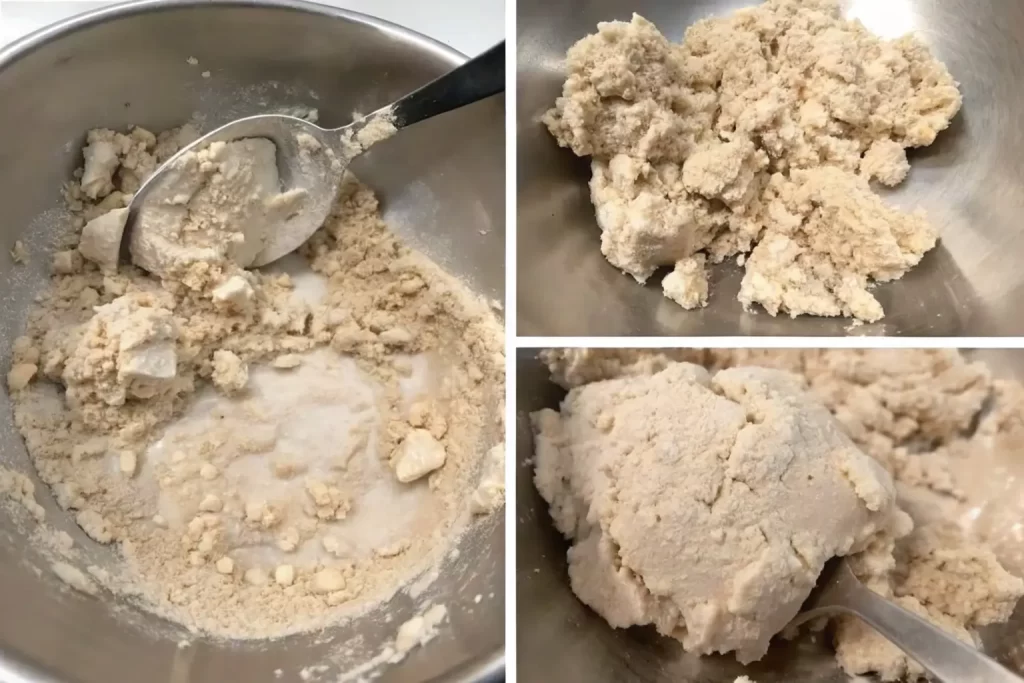
Baking Techniques for Perfect Biscuits
After preparing the dough, focus on baking techniques for baking glutenless biscuits:
- Roll out the dough to about ¾-inch thickness on a floured surface.
- Cut biscuits with a 2-1/2-inch cutter, placing them 2 inches apart on a greased baking sheet.
- Bake in the preheated oven for about 10 to 12 minutes or until the tops are golden brown.
- Check for doneness by gently tapping the tops; they should feel firm to the touch.
With these baking tips, you’ll make perfect biscuits every time. Try adding cheese or other flavors to your biscuit recipe. Enjoy your delicious glutenless biscuits!
Serving Suggestions for Gluten Free Biscuits
Gluten free biscuits offer endless serving options. They’re perfect for any time of day. Try them with butter and jam for a classic, comforting taste.
For a heartier meal, use them as a base for biscuits and gravy. This combo is great for brunch or dinner. It’s both tasty and filling.
Be bold and try new recipes with biscuits. Make a Sausage, Egg and Cheese Breakfast Sandwich or a Hot Ham and Cheese Sandwich. They add flavor and texture to your meals. You can also use them in desserts, like shortcakes, with fresh fruit and whipped cream.
Use gluten free biscuits in various ways to make your meals better. They can be a side, a main dish, or even a dessert. Experiment with different recipes to find your favorites!
How to Store and Freeze Your Biscuits
Keeping your homemade glutenless biscuits fresh is key. Proper storage and freezing are essential. Follow these simple tips to keep your biscuits light, fluffy, and delicious for longer.
Best Practices for Keeping Biscuits Fresh
Storing gluten free biscuits requires keeping them airtight. Here are some effective practices:
- Store biscuits in airtight containers to prevent moisture loss.
- For short-term storage, keep baked biscuits at room temperature, where they can last for two to three days.
- For longer-term storage, consider freezing biscuits, which allows them to maintain quality for up to three weeks.
Freezing and Reheating Tips for Convenience
Freezing biscuits is a great way to prepare ahead. Here are some convenience tips:
- Flash freeze biscuits for 20 minutes before transferring them to a freezer-safe container. This helps prevent them from sticking together.
- When freezing biscuits, label the container with the date to keep track of storage duration.
- To reheat frozen biscuits, go straight from freezer to oven at 350°F (175°C) for about 10-15 minutes. Alternatively, bake them from a frozen state at 475°F for approximately 8 minutes, then let them stay in the oven for an additional 5 to 6 minutes after turning off the heat.
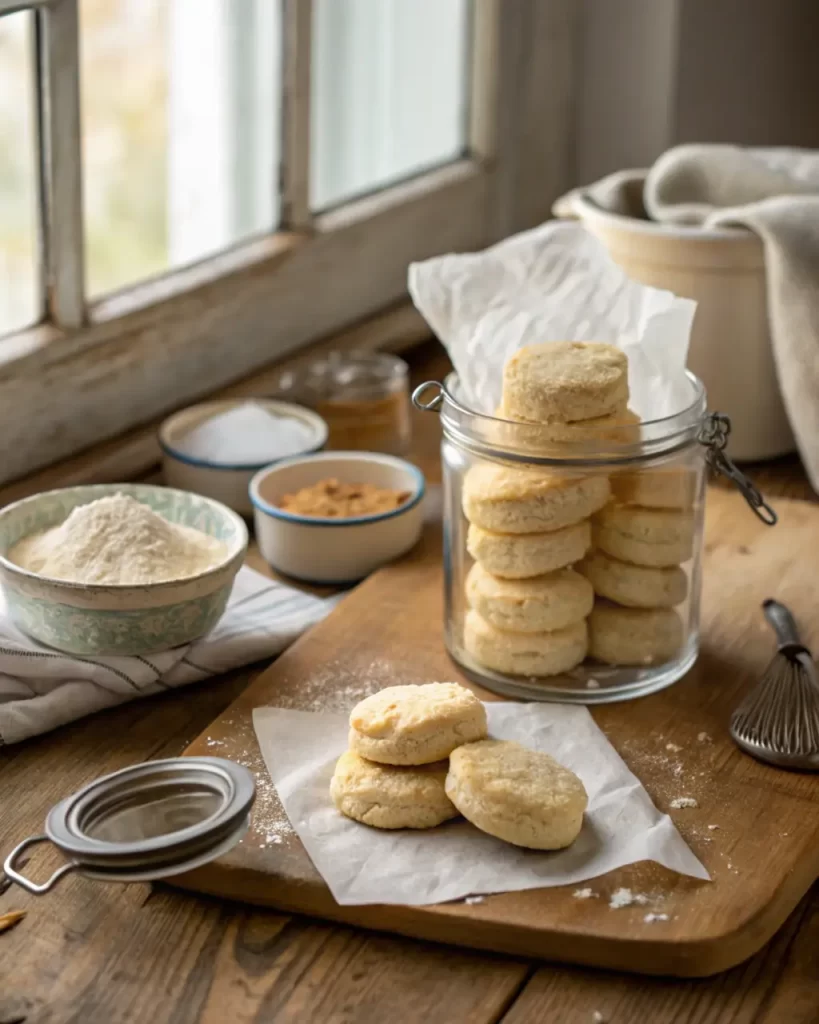
Common Mistakes to Avoid When Making Biscuits
Making perfect gluten-free biscuits is a fun experience. But, many people make mistakes that stop them from getting it right. Knowing these common errors can help you make the perfect biscuit texture.
One big mistake is overworking the dough. This can make your biscuits dense instead of light and fluffy. Mix the ingredients just until they’re combined. Use a fork or your hands to avoid overmixing.
Temperature is also key in biscuit baking. Using ingredients that are too warm can mess up the texture. Make sure your butter and buttermilk are cold. This helps your biscuits rise better.
Another mistake is not using good-quality baking powder. Bad baking powder can make your biscuits flat. Choose fresh baking powder for the best results. The right mix of baking powder and buttermilk is crucial.
Remember these tips for baking for your next biscuit batch. With a bit of care, you can make glutenless biscuits that are delicious and light. Avoiding these mistakes will make your baking fun and your biscuits a hit with everyone.
Conclusion
Reflecting on gluten free biscuits, you’ll see it’s a rewarding journey. Choosing the right flour blends and keeping ingredients cold are key. These steps help make biscuits that are as good as the traditional kind but better for your health.
Trying out different gluten free ingredients and baking methods is crucial. Brands like Frontier Biscuit Company show how it’s done. They offer products that are perfect for those with gluten intolerance or who just want a healthier snack.
Adding superfoods and local ingredients to your recipes can make biscuits even better. As more people look for gluten free options, your baking can help them live healthier. Enjoy every bite of your homemade biscuits.
FAQ
What are gluten free biscuits?
Glutenless biscuits are made without wheat flour. They use gluten-free flour blends instead. These biscuits are light and fluffy, great for those with gluten issues. They let everyone enjoy biscuits without dietary worries.
How do I choose the right gluten-free flour blend for biscuits?
Pick a reliable glutenfree flour blend for the best biscuits. Brands like Cup4Cup, Bob’s Red Mill, and King Arthur are good choices. Stay away from blends that don’t work well, like Just About Food Gluten Free Whole Grain Flour, for the best texture.
Why is it important to use cold ingredients when making gluten free biscuits?
Cold butter and milk are key for flaky biscuits. They create steam during baking, which is essential for the right texture. Cold ingredients help the biscuits rise light and fluffy.
What common mistakes should I avoid when making gluten free biscuits?
Avoid overworking the dough and using the wrong ingredient temperatures. Also, don’t use low-quality baking powder. These mistakes can make biscuits dense and flat. Handle the dough gently and measure ingredients carefully for the best biscuits.
How can I store gluten free biscuits to keep them fresh?
Store glutenfree biscuits in an airtight container at room temperature. This keeps them fresh. Don’t store them in humid places to prevent staleness, so they stay tasty and fluffy.
Can I freeze gluten free biscuits, and how do I reheat them?
Yes, you can freeze both baked and unbaked gluten free biscuits. Store them in airtight bags or containers. To reheat, bake from frozen at a lower temperature until warm. This keeps their texture and taste.
What are some delicious serving suggestions for gluten free biscuits?
Serve gluten free biscuits in many ways. Enjoy them with butter and jam, in biscuits and gravy, or in sandwiches and shortcakes. Their versatility makes them perfect for many occasions.
Print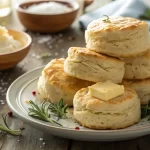
Easy Homemade Gluten-Free Biscuits
- Total Time: 32 minutes
- Yield: 8 biscuits 1x
Description
Light and fluffy gluten-free biscuits with golden tops and soft interiors, perfect for those with gluten intolerance or seeking allergy-friendly baking options.
Ingredients
- 2 ¼ cups gluten-free all-purpose flour (with xanthan gum)
- 2 tablespoons sugar
- ½ teaspoon salt
- 1 tablespoon baking powder
- ½ cup cold unsalted butter, cut into small pieces
- ¾ cup buttermilk (or dairy-free alternative)
Instructions
- Preheat Oven: Preheat your oven to 425°F (220°C).
- Mix Dry Ingredients: In a large bowl, whisk together the gluten-free flour, sugar, salt, and baking powder.
- Cut in Butter: Add the cold butter pieces to the dry ingredients. Using a pastry cutter or your fingers, work the butter into the flour mixture until it resembles coarse crumbs.
- Add Buttermilk: Pour in the buttermilk and stir until the dough comes together. Be careful not to overmix.
- Knead and Fold: Turn the dough onto a lightly floured surface. Gently knead and fold the dough a few times to create layers, which will help achieve a flaky texture.
- Shape Biscuits: Pat the dough to a ¾-inch thickness. Use a 2½-inch biscuit cutter to cut out biscuits, placing them about 2 inches apart on a greased baking sheet.
- Bake: Place the baking sheet in the preheated oven and bake for 10-12 minutes, or until the tops are golden brown.
- Serve: Remove from the oven and let the biscuits cool slightly before serving warm.
Notes
- Flour Blend: For best results, use a high-quality gluten-free flour blend that contains xanthan gum. If your blend does not include xanthan gum, add 1 teaspoon to the dry ingredients.
- Dairy-Free Option: Substitute the butter with a dairy-free alternative and use a plant-based milk mixed with 1 tablespoon of lemon juice or vinegar as a buttermilk substitute.
- Storage: Store leftover biscuits in an airtight container at room temperature for up to 2 days. To reheat, warm them in a preheated oven at 350°F (175°C) for about 5 minutes.
- Prep Time: 20 minutes
- Cook Time: 12 minutes
- Category: Breakfast, Side Dish
- Cuisine: American
Nutrition
- Calories: 210 kcal
- Fat: 9g
- Carbohydrates: 28g
- Protein: 3g





